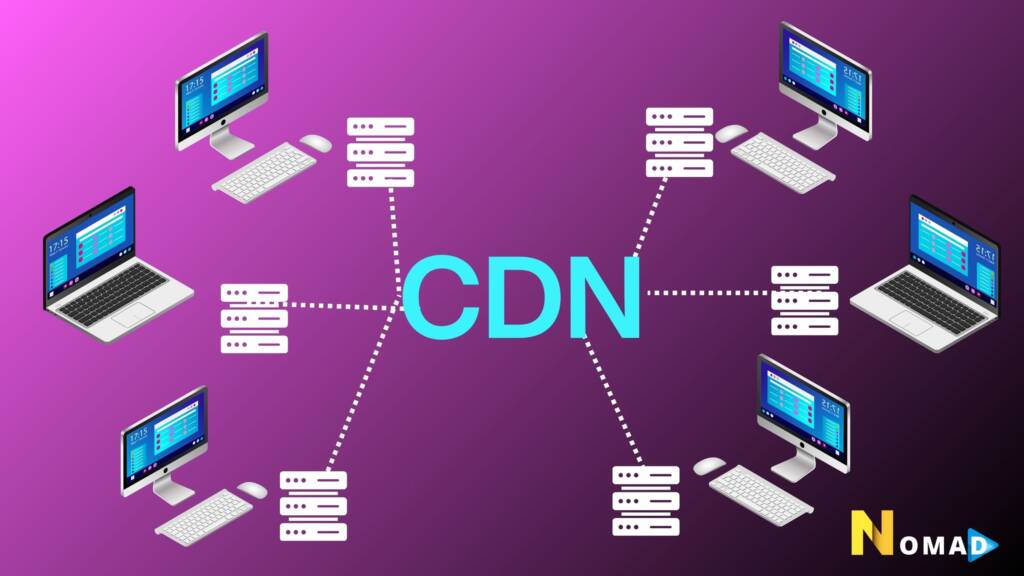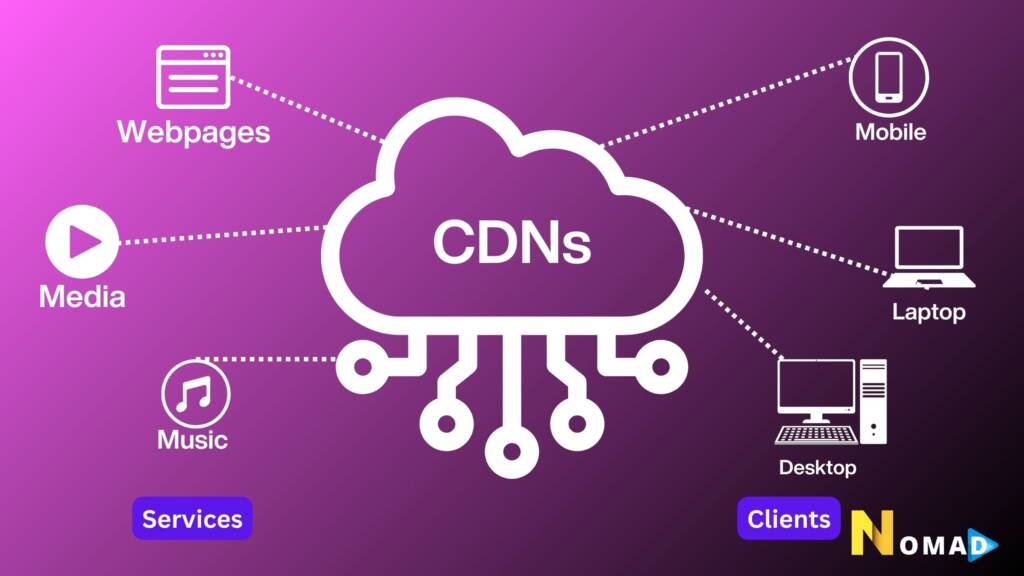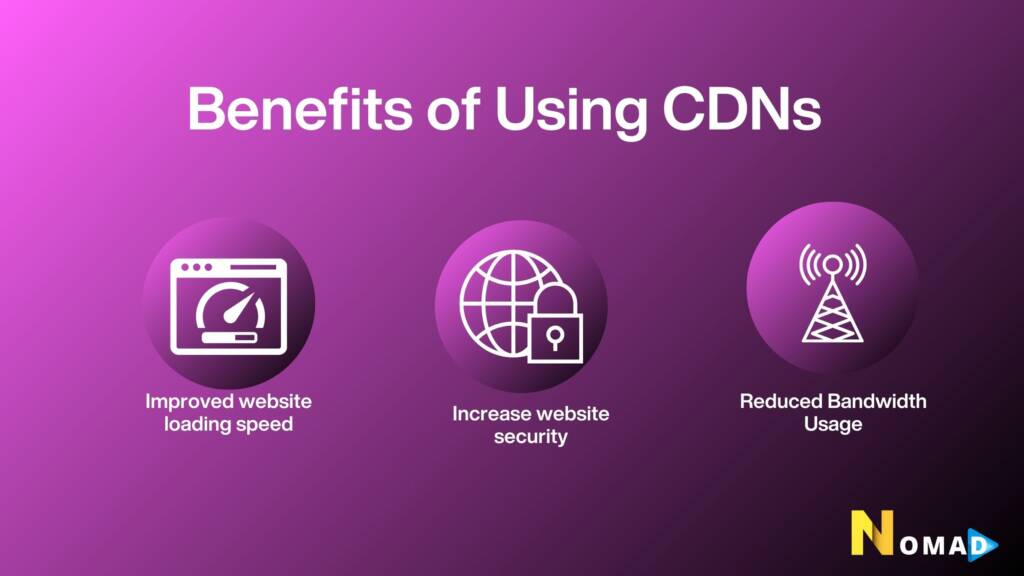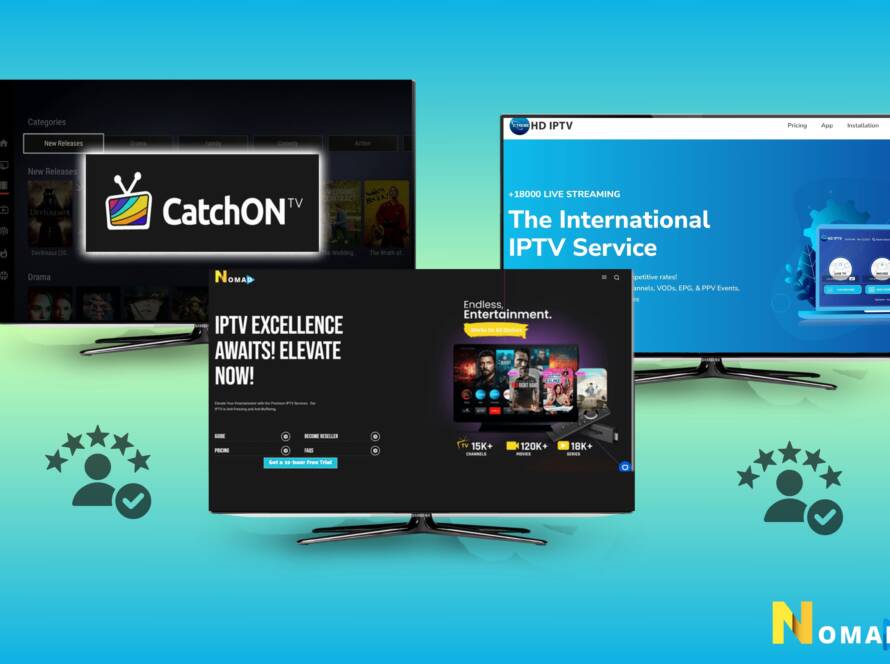Welcome! Have you ever thought about how your favorite movies and TV shows seem to play without any problems on your IPTV service? The Content Delivery Networks (CDNs) are to thank for everything! These content delivery networks (CDNs) are like superhighways for digital content. They make sure that videos, live streams, and on-demand content get to your screen quickly and easily. CDNs are the unsung stars behind the scenes who make sure you have a smooth viewing experience, whether you’re binge-watching the newest show or catching up on live sports. Let’s look at how CDNs make IPTV (Internet Protocol Television) fun to use and make sure you never miss a show.
Table of Contents
Understanding Content Delivery Networks (CDNs)

Information delivery Networks (CDNs) have changed the way information is sent over the internet and are now an important part of modern technology. At their core, CDNs are networks of servers carefully placed around the world to quickly send web content like images, videos, scripts, and other multimedia to users based on where they are located. By caching content closer to users, CDNs cut down on latency and improve website speed. This is done by reducing the distance data has to travel.
This closeness makes loading times faster and the user experience better, which is very content delivery networks (CDNs) important for companies that depend on the Internet and online shopping. Websites can handle a lot of traffic with CDNs without slowing down or losing stability. This makes them essential tools for content providers, e-commerce platforms, media companies, and more.
Additionally, CDNs improve security with features such as DDoS protection and SSL/TLS encryption, keeping data safe from online threats and ensuring its integrity. Material delivery Networks (CDNs) are becoming more and more important for improving the delivery of digital material as the number of people using the internet grows around the world. They will have a big impact on how people interact and interact with each other online in the future.
How CDNs Work

material Delivery Networks (CDNs) use complex systems to make sure that digital material gets to the right places on the internet as quickly and easily as possible. Distributing information closer to end users is what information Delivery Networks (CDNs) are all about. This cuts down on latency and improves overall performance.
A process called content caching sends a user’s request for content from a website or service to the closest CDN server, which is also called an edge server. This is based on how close the server is geographically. Images, videos, scripts, and other media files on a website are cached on these edge computers.
CDNs make sure that requests for the same content can be met more quickly by strategically storing copies of it in various places around the world. This distributed method not only speeds up load times but also makes the system more reliable by easing the load on origin servers and lessening the effect of traffic spikes or server failures.
Also, Content Delivery Networks (CDNs) use complex algorithms to constantly find the best ways to deliver content. This makes sure that data is sent quickly and without any problems. Through these methods, CDNs greatly improve the user experience, allow for smooth streaming, speed up website performance, and improve the delivery of digital material around the world.
Benefits of Using CDNs

Material delivery Networks (CDNs) improve the speed and dependability of sending digital material because they have many benefits. Material delivery Networks (CDNs) can speed up websites and cut down on latency by storing material closer to users. This is one of their main benefits. This closeness makes loading times faster and browsing easier, which is important for keeping visitors on your site and lowering return rates.
CDNs also improve flexibility by handling sudden increases in website traffic without slowing things down. material Delivery Networks (CDNs) help make material available on more servers around the world. This increases uptime and lowers the chance of downtime caused by server failures or network congestion.
Also, content delivery networks (CDNs) are very important for making the best use of bandwidth and cutting server load, which lowers the costs of running content providers and e-commerce platforms. In addition to improving speed, CDNs also make things safer by including DDoS protection, SSL/TLS encryption, and content integrity checks.
These features protect against cyber threats and make sure that data is sent safely. Content Delivery Networks (CDNs) are essential parts of today’s web infrastructure because they let companies send high-quality digital experiences to people all over the world quickly and accurately.
Types of CDNs
There are different kinds of content delivery networks (CDNs) that are made to meet different needs for delivering digital information. Global CDNs work on a huge scale, spanning several continents to quickly send information all over the world. These content delivery networks (CDNs) use large networks of edge servers carefully placed in key geographic areas to make sure that web content is sent quickly and reliably around the world.
Regional CDNs, on the other hand, focus on certain geographic areas and serve targeted audiences with better performance and lower latency within that region. A lot of websites and apps use public content delivery networks (CDNs), which are easy for everyone to access and use.
They offer cheap ways to send content. Their technology is scalable, and they have strong features like caching, load balancing, and better security. This makes them perfect for businesses that want to reach a lot of people and be able to change how they run. Private CDNs, on the other hand, are networks that were built just for one company and no one else.
Private content delivery networks (CDNs) give businesses with specific performance needs and data privacy issues more control over content delivery, customization options, and strict security measures. material Delivery Networks (CDNs), which can be global, regional, public, or private, are very important for making sure that digital material is delivered quickly, securely, and at a high level of performance for businesses and users all over the world.
CDN Features and Capabilities
material Delivery Networks (CDNs) have a lot of features and functions that are meant to make it easier for digital material to be sent and accessed over the internet. One of the most important things about Content Delivery Networks (CDNs) is that they can speed up content delivery by storing copies of web assets like images, videos, and scripts on edge computers around the world.
This technique for caching cuts latency by a large amount and speeds up load times for people who are accessing websites or streaming media. This makes sure that browsing is smooth. Advanced security features, such as SSL/TLS encryption, are also built into CDNs to protect the integrity of data and keep deals between users and websites safe.
Material delivery Networks (CDNs) also support adaptive bitrate streaming for media and video material. This means that the quality of the video is changed dynamically based on the network conditions to avoid buffering and make sure playback runs smoothly. Furthermore, content delivery networks (CDNs) make methods like prefetching and content compression possible, which improves the efficiency of data transfer and lowers bandwidth usage.
Another cool thing about CDNs is that they can be easily scaled up or down to handle changes in traffic and meet the needs of more users without damaging speed. Also, content delivery networks (CDNs) offer real-time analytics and monitoring tools that show how well content is being delivered, how users are behaving, and how much traffic is coming in and out.
This helps businesses make smart choices and keep improving their digital strategies. Content Delivery Networks (CDNs) are basically essential tools for improving web speed, making it safer, and quickly and effectively sending high-quality digital experiences to people all over the world.
Choosing the Right CDN Provider
Businesses that want to improve user experience and speed up the delivery of digital material must choose the right material Delivery Networks (CDNs) provider. When looking at different CDN providers, you should think about a number of things to make sure they meet your business’s wants and goals.
Scalability is the most important thing because CDNs have to handle different amounts of traffic and customer demand without slowing down. It is also important to look at the areas that a CDN provider covers, since having servers in many places makes sure that material can be sent quickly and reliably to users all over the world. Another important thing to think about is how much it will cost.
Different providers have different pricing plans that are based on bandwidth usage, storage, and extra features like security improvements and analytics tools. It’s also important to look at how good the CDN provider’s customer service is, since quick technical help can cut down on downtime and solve problems quickly.
To protect against online threats and keep data private, you should also look at security features like DDoS protection, SSL/TLS encryption, and content integrity checks. To make implementation easier and improve operational efficiency, it’s also important to check if the technology will work with the current infrastructure and if it can be integrated with other technology solutions.
Lastly, looking at speed metrics and case studies of successful implementations can tell you a lot about the CDN provider’s track record and how reliable they are at providing high-quality digital experiences. Businesses can choose a Content Delivery Networks (CDNs) provider that meets their needs and helps them reach their strategic goals for digital content delivery and user involvement by carefully looking at these factors.
CDN Implementation Best Practices
Putting in place Content Delivery Networks (CDNs) requires following a number of best practices to make sure that digital content delivery works as quickly and efficiently as possible. In order to find the best CDN configuration, it’s first important to do a full analysis of the current website architecture and traffic trends. One way to do this is to figure out what kinds of content (like images, videos, or scripts) will gain the most from CDN caching and delivery optimizations.
To find the right balance between keeping material fresh and caching effectively, it’s important to set up caching rules and TTL (Time-To-Live) settings correctly. Also, combining CDN features with already-built systems, like content management systems (CMS) or e-commerce platforms, makes it easier to serve content and improves the efficiency of operations.
Continuous monitoring and performance optimization are important parts of setting up a CDN. To find and fix bottlenecks or latency problems before they happen, CDN analytics and performance measures need to be looked at on a regular basis.
High availability and reliability are guaranteed when you use CDN features like load balancing and failover methods. This is true even when traffic spikes or servers go down. Using HTTPS and SSL/TLS encryption methods also makes data safer and protects user privacy, which builds trust and helps businesses follow data protection laws.
Audits and updates of CDN setups and security settings on a regular basis make sure that they are still in line with changing business needs and industry standards. Businesses can use Content Delivery Networks (CDNs) to improve website speed, reliability, and the general user experience by following these best practices for setting up a CDN.
CDN Trends and Future Developments
Content Delivery Networks (CDNs) are changing to meet the new challenges and possibilities in the digital world as the number of people who use digital content continues to rise. Edge computing is a big trend that will affect the future of content delivery networks (CDNs).
This means that CDNs will not only serve content, but they will also process and analyze data closer to the users. This method cuts down on delay even more and works with real-time apps like IoT (Internet of Things) devices and AR/VR experiences.
Also, more and more CDNs are using AI and machine learning algorithms to improve content delivery routes on the fly, guess how users will behave, and tailor content delivery to each person’s preferences. Another new trend is the coming together of CDN features with cloud services. This will make it easier to combine storage, computing, and CDN features on a single platform.
CDNs are also improving their support for high-definition video delivery and low-latency streaming technologies because online games and video streaming need higher resolutions and faster load times. Security is still a very important issue, and CDNs are always working to protect against cyber threats by adopting advanced encryption protocols, reducing DDoS attacks, and improving their ability to find threats.
Content Delivery Networks (CDNs) will continue to improve their performance, scalability, security, and personalized user experiences in the future. This will make them even more important for quickly and reliably sending high-quality digital content around the world.
CDN Challenges and Solutions
material Delivery Networks (CDNs) have to deal with a number of problems as they try to improve user experience and speed up the delivery of digital material. One of the biggest problems is controlling and lowering delay, especially in places with weak network infrastructure or a lot of people using the internet at the same time. CDNs solve this problem by placing edge servers in smart ways so that they cache and deliver material closer to end users.
This cuts down on the distance data has to travel and the time it takes to arrive, which is called latency. Another challenge is making sure that seamless scalability can handle sudden increases in traffic or yearly demand high points without slowing things down.
CDNs deal with problems related to growth by using dynamic load balancing and infrastructure that can be quickly expanded to meet rising capacity needs. Security is still very important, and CDNs are always improving their protection against cyber threats like DDoS attacks, data breaches, and malware infections.
Strong security protocols, like SSL/TLS encryption, web application firewalls, and content integrity checks, can help lower these risks and keep private data safe. CDNs also have to deal with ongoing problems like making sure they are compatible with and work well with a wide range of technology platforms and content management systems.
Solutions include providing adaptable APIs, backing multiple protocols, and teaming up with tech companies to make merging easier and make sure all systems can talk to each other. To make sure they follow global data privacy laws and industry norms, CDNs also need to put in place strict data protection measures and regularly check their security practices.
Content Delivery Networks (CDNs) continue to be very important in meeting the changing needs of businesses and users around the world and improving digital content delivery by aggressively addressing these problems and coming up with new, scalable solutions.
Case Studies: Successful CDN Deployments
A number of well-known case studies show how material Delivery Networks (CDNs) can improve the delivery of digital material and the user experience in a wide range of industries. In the e-commerce industry, for example, a global retailer used a CDN to speed up website load times and make the buying experience better for customers all over the world.
By using CDN caching and carefully placing edge servers in key markets, the store was able to cut page load times by a large amount. This led to higher conversion rates and happier customers.
In the entertainment and media business, a streaming platform used CDNs to send high-definition video material to millions of viewers at the same time during live events. The CDN’s strong infrastructure and adaptive bitrate streaming made sure that viewing was smooth and buffering was kept to a minimum, which kept viewers interested and helped them remember the content.
In the gaming business, a multiplayer online game developer added a CDN to cut down on latency and make the game run better for players in different parts of the world. The developer fixed latency problems by putting edge servers close to gaming servers and using CDN optimizations for game content delivery.
This made sure that gamers had a smooth experience even during busy times. These case studies show how flexible and important material Delivery Networks (CDNs) are for improving performance metrics, driving business growth across many global sectors, and making sure digital material is delivered more efficiently.
Conclusion
In conclusion, information Delivery Networks (CDNs) are an important part of today’s digital infrastructure because they improve user experience around the world, speed up website performance, and make sure that information is delivered more efficiently. CDNs lower latency, speed up websites, and make sure users can access digital content reliably by carefully caching and sending content closer to end users. They also have strong security features, choices for scalability, and support for streaming high-definition media, which makes them essential for businesses in all fields. As technology changes, CDNs keep coming up with new ideas, like edge computing, AI integration, and better security protocols. This means that digital content delivery and user interaction will be even more efficient and effective.
FAQs
1.What is a CDN and how does it work?
A Content Delivery Network (CDN) is a network of distributed servers strategically located around the world to deliver web content more efficiently to users. It works by caching content on these servers, reducing latency and improving load times.
2.Why should I use a CDN?
CDNs help improve website performance by delivering content faster to users, reducing server load, and enhancing overall user experience. They also provide security benefits and support scalability during traffic spikes.
3.What types of content can be delivered through CDNs?
CDNs can deliver various types of content, including images, videos, scripts, stylesheets, and other static or dynamic assets used on websites and applications.
4.How do CDNs enhance security?
CDNs enhance security through features like DDoS protection, SSL/TLS encryption, and web application firewalls, safeguarding against cyber threats and ensuring safe data transmission.
5.What are the benefits of using a global CDN?
Global CDNs improve geographical reach and ensure consistent content delivery across different regions, supporting international audiences and enhancing global scalability.


